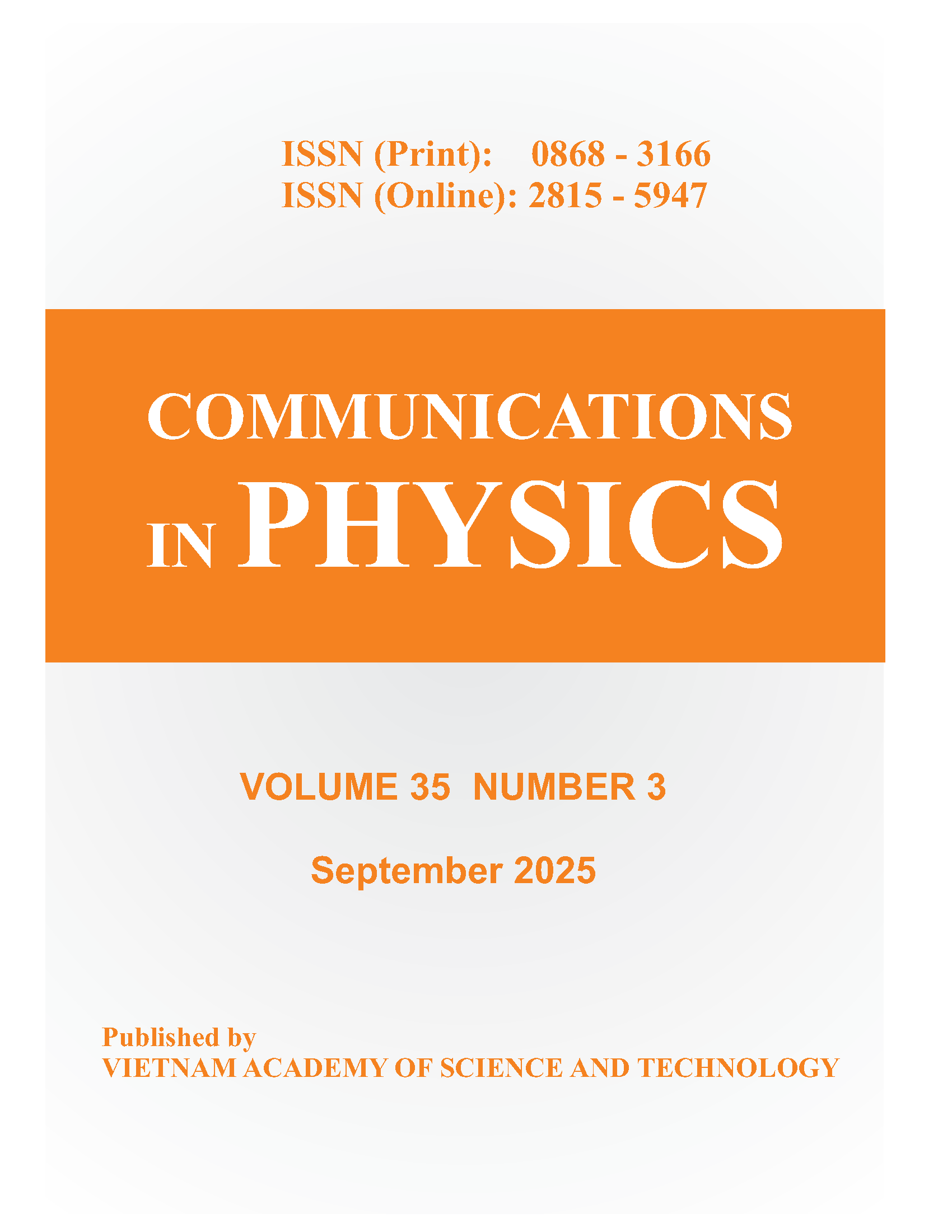On-chip ZnO nanofibers prepared by electrospinning method for NO2 gas detection
Author affiliations
DOI:
https://doi.org/10.15625/0868-3166/27/4/10899Keywords:
Zinc oxide, nanofibers, electrospinning, NO2 sensingAbstract
In the present study, on-chip ZnO nanofibers were fabricated by means of the electrospinning technique followed by a calcination process at 600 oC towards the gas sensor application. The morphology, composition, and crystalline structure of the as-spun and annealed ZnO nanofibers were investigated by field emission scanning electron microscopy (FESEM), energy dispersive X-ray (EDX), and X-ray diffraction (XRD), respectively. The findings show that spider-net like ZnO nanofibers with a diameter of 60 – 100 nm were successfully synthesized without any incorporation of impurities into the nanofibers. The FESEM images also reveal that each nanofiber is composed of many nanograins. The combination of experimental and calculated X-ray diffraction data indicate that ZnO nanofibers were crystallized in hexagonal wurtzite structure. For the gas sensing device application, the ZnO nanofibers-based sensors were tested with the nitrogen dioxide gas in the temperature range of 200 oC to 350 oC and concentrations from 2.5 ppm to 10 ppm. The sensing property results indicate that at the optimal working temperature of 300 oC, the ZnO nanofibers-based sensors exhibited a maximum response of 30 and 166 times on exposure of 2.5 and 10 ppm NO2 gas, respectively. The presence of nanograins within nanofibers, which results in further intensification of the resistance modulation, is responsible for such high gas response.
Downloads
References
R. Kumar, O. Al-Dossary, G. Kumar, and A. Umar, Nano-Micro Lett. 7, 97 (2015).
I. Sayago, M. Aleixandre, and J. P. Santos, 1 (2017).
L. Shi, A. J. T. Naik, J. B. M. Goodall, C. Tighe, R. Gruar, R. Binions, I. Parkin, and J. Darr, (2013).
M.-W. Ahn, K.-S. Park, J.-H. Heo, D.-W. Kim, K. J. Choi, and J.-G. Park, Sensors Actuators B Chem. 138, 168 (2009).
Z. U. Abideen, A. Katoch, J. H. Kim, Y. J. Kwon, H. W. Kim, and S. S. Kim, Sensors Actuators, B Chem. 221, 1499 (2015).
Y. Zhang, X. He, J. Li, Z. Miao, and F. Huang, Sensors Actuators, B Chem. 132, 67 (2008).
X. Yang, C. Shao, H. Guan, X. Li, and J. Gong, Inorg. Chem. Commun. 7, 176 (2004).
A. Katoch, S. W. Choi, H. W. Kim, and S. S. Kim, J. Hazard. Mater. 286, 229 (2015).
T. Senthil and S. Anandhan, J. Colloid Interface Sci. 432, 285 (2014).
A. Di Mauro, M. Zimbone, M. E. Fragal??, and G. Impellizzeri, Mater. Sci. Semicond. Process. 42, 98 (2016).
P. Van Tong, N. D. Hoa, N. Van Duy, and N. Van Hieu, RSC Adv. 5, 25204 (2015).
K. Thangavel, A. Balamurugan, T. Venkatachalam, and E. Ranjith Kumar, Superlattices Microstruct. 90, 45 (2016).
A. Zeuner, H. Alves, D. M. Hofmann, B. K. Meyer, M. Heuken, J. Bläsing, A. Krost, Appl. Phys. Lett., 2078, 10 (2014).
P. Rai and Y. T. Yu, Sensors Actuators, B Chem. 173, 58 (2012).
D. Calestani, M. Zha, R. Mosca, A. Zappettini, M. C. Carotta, V. Di Natale, and L. Zanotti, Sensors Actuators, B Chem. 144, 472 (2010).
H. U. Lee, K. Ahn, S. J. Lee, J. P. Kim, H. G. Kim, S. Y. Jeong, and C. R. Cho, Appl. Phys. Lett. 98, 11 (2011).
A. Mirzaei, B. Hashemi, and K. Janghorban, J. Mater. Sci. Mater. Electron. 27, 3109 (2016).
C. Jin, S. Park, H. Kim, and C. Lee, Sensors Actuators B. Chem. 161, 223 (2012).
Downloads
Published
How to Cite
Issue
Section
License
Communications in Physics is licensed under a Creative Commons Attribution-ShareAlike 4.0 International License.
Copyright on any research article published in Communications in Physics is retained by the respective author(s), without restrictions. Authors grant VAST Journals System (VJS) a license to publish the article and identify itself as the original publisher. Upon author(s) by giving permission to Communications in Physics either via Communications in Physics portal or other channel to publish their research work in Communications in Physics agrees to all the terms and conditions of https://creativecommons.org/licenses/by-sa/4.0/ License and terms & condition set by VJS.











